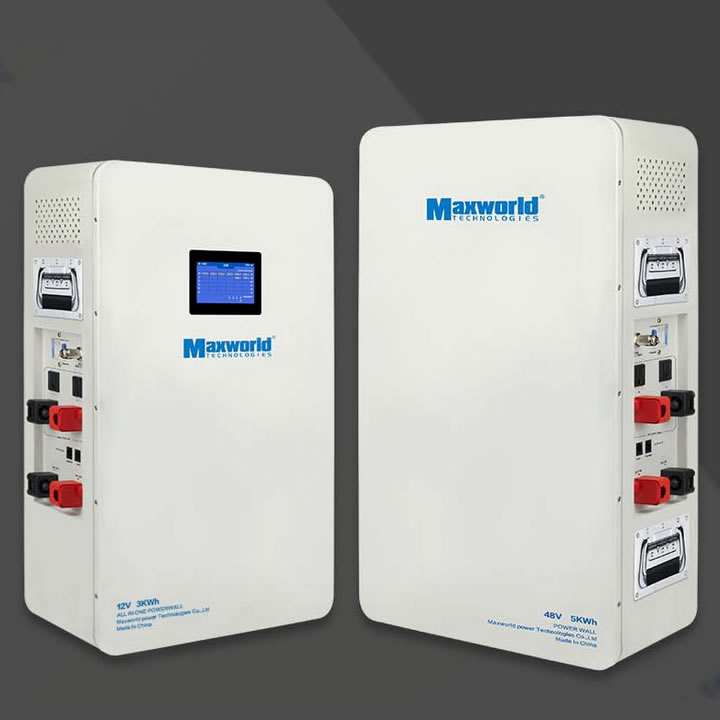Interest in lithium batteries is growing stronger.
But replacing the old lead banks may not be quite as easy as manufacturers often want you to believe. Here you get a solid summary of what you need to know before a change, regardless of whether you choose to do it yourself or hire professional help.
Think off! It is seldom possible to replace lead batteries with lithium batteries straight off. You also need to review the surrounding systems so that they are adapted to the different characteristics of the new batteries.
1. Power-intensive Equipment
When it comes to powering power-hungry equipment, such as a bow thruster or an anchor winch, it is often a good idea to keep a separate lead-acid battery for that purpose.
This is because the protection circuits in the lithium system limit high currents to avoid low voltage on the battery bank. The alternative is to dimension the lithium system to withstand the high currents that bow thrusters and electric winches require.
The latter is a much more expensive option. The lead-acid batteries can be charged using, for example, a DC/DC converter connected to the lithium system.
2. Protection Against Undervoltage
Lithium batteries are very sensitive to Undervoltage, which means that they risk being destroyed if they are completely discharged. A special Undervoltage protection is required.
3. Protection Against Overcharging
Lithium batteries are also sensitive to overcharging and therefore require systems that prevent this. Either through a good charger with a custom regulator on the generator or a separate charger adapted for lithium batteries.
Keep in mind in particular that other power supply systems such as solar cells and wind generators must also be adapted.
4. Cell Balancing
To achieve maximum life, the cells in the battery must be balanced during charging.
This is done with special circuits that are mounted over the poles of each cell. This also applies to batteries with so-called matched cells. The circuits must be adapted to the exact make/type of lithium battery on which they are to be used.
5. Measure The Charging Voltage On The Battery
For good battery function and long life, the accuracy of the charging voltage is important. The battery voltage that controls the charge should therefore be measured directly on the battery so that voltage drops in cables have no effect.
6. Higher Charging Voltage
The charging voltage for lithium batteries is slightly higher than for lead batteries, 14.8 volts at room temperature.
You can keep the “lead charger” if the battery has a built-in charge control. Otherwise, existing charge regulators intended for lead-acid batteries need to be replaced with a type intended for lithium batteries.
7. Shore Charger
The charger should only be connected to the battery bank – not to the consumer. These receive their own power supply via, for example, power supplies. (Also applies to lead batteries but is even more important for lithium.)
8. Only Matched Batteries Connected
Batteries with matched cells, which do not have a BMS that regulates the balancing, should not be connected in series or in parallel unless the batteries are also matched with each other.
9. Increased Load On The Generator
The generator driven by the motor will operate with a much higher average current which leads to higher heat generation.
Therefore check that the engine compartment is adequately ventilated. Wear on the drive belt and bearings also increases, which is why regular checking of the belt and belt tension is more important.
10. Discharge Warning
An almost discharged battery alarm should be present as lithium batteries do not give a warning in the form of falling voltage before it runs out.
Security
Lithium batteries come in several different types and designs.
The lithium batteries normally used in boats are of the LiFePo4 battery type and are not considered to have a higher risk of fire than a lead-acid battery system has, in the form of, for example, hydrogen explosion.
Lithium batteries have low internal resistance and a short circuit can therefore cause extremely large currents with strong fire development as a result.
Therefore, the fuse system needs to be well thought out, including fuses near battery terminals and battery terminal cables that are routed so that they can not cause a short circuit.
All high current cable lugs must be crimped with tools and crimp cable lugs designed for the cable area.
Otherwise, there is a risk of fire.
Benefits
- Receives charge more efficiently and therefore charges faster.
- Has significantly lower self-discharge and therefore requires less maintenance charge, if any.
- Higher energy density than lead both in terms of volume and weight. Lithium batteries are therefore both lighter and smaller than lead batteries with the same capacity.
- The nominal capacity of LiFePo4 batteries can be utilized practically to 80–90 percent without deteriorating their service life. The corresponding figure for lead is about 50 percent. This means that you only need 60 percent of the capacity of a lead-acid battery bank when you switch to LiFePo4 batteries.
- Lithium batteries have relatively low internal resistance even at low charge levels, which means that they can deliver high current outlets without significant voltage drops and regardless of the current charge status.
- The remaining capacity can be measured with great precision in lithium batteries.

